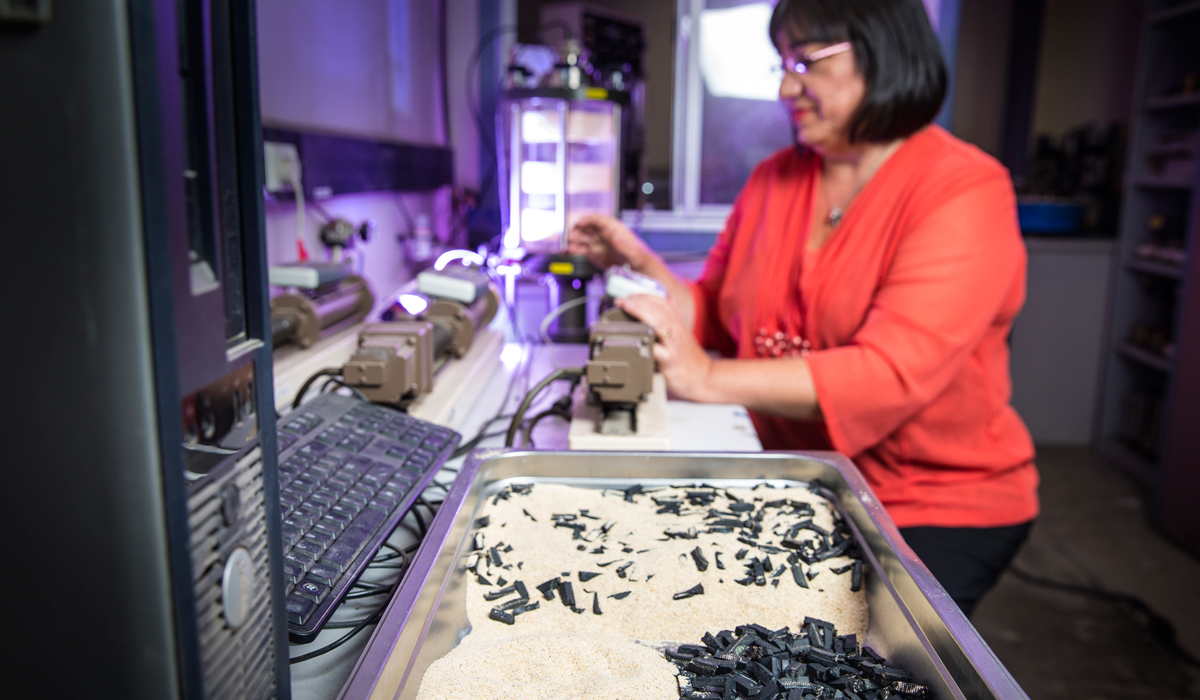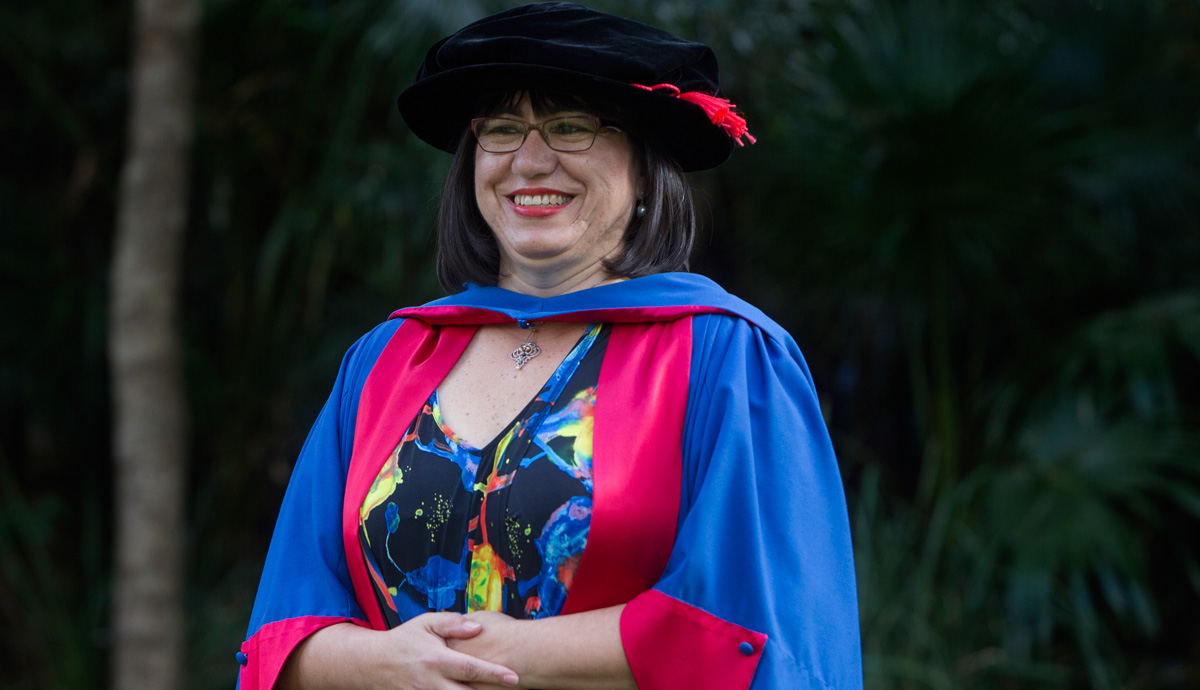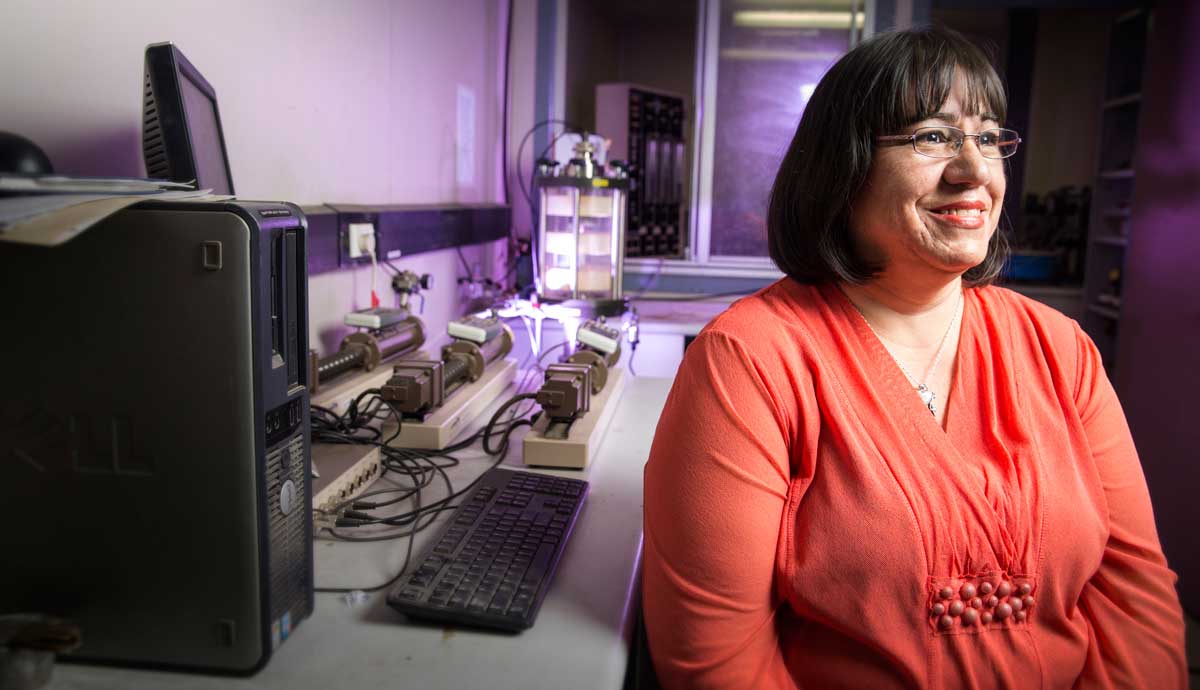July 23, 2015
Quake-proofing homes of the world’s most vulnerable
Soledad Mashiri's engineering research will help make homes safer for people living in earthquake-prone regions.
It has been a decades-long journey for Chilean-born Soledad, now aged 51 and a mother of three, to complete her PhD. She was living in Sydney’s Western Suburbs and had spent the past few years working night shifts in a supermarket when she decided to look after unfinished business and return to her studies.
By sheer coincidence, the thesis project she chose would have a very personal element.
“I remember that the first meeting with my supervisors was on 26 February 2010, and two days later the city of Concepción in Chile - where I spent most of my childhood - was struck by a massive earthquake,” Soledad said.
On 28 February 2010 a massive magnitude-8.8 earthquake struck Chile in the early hours of the morning. The earthquake and subsequent tsunami claimed more than 500 lives.
The topic that caught her eye was a project being led by Dr Neaz Sheikh and Dr J S Vinod that involved using a mix of sand and rubber chips made from recycled tyres as a cushion around building foundations to reduce the impact of earthquakes on low-rise buildings.
Earthquakes have caused an average of more than 20,000 deaths a year worldwide, of which more than 80 per cent of those deaths are in developing countries.

“This earthquake made me realise that my research had a very important meaning and contributed to my passion for the topic. Thinking that thousands of lives could be saved in the future kept me well motivated during my journey.”
That journey began with a childhood fascination with engineering in Chile.
“I loved to spend time with my dad fixing toys, building up Meccano toy models and visiting construction sites,” she said. “My dad was in construction and built several important bridges in Chile, among other projects.”
Soledad studied civil engineering at the Universidad Técnica Federico Santa Maria (UTFSM) in the city of Valparaiso, graduating in 1991. The following year she enrolled in a Masters of Civil Engineering at UOW, where she would meet her husband and change her life course, leaving her Master’s partially complete.
The couple moved to Chile to work in the family construction business and returned to Australia in 1997 when her husband took up an offer to do his PhD at Monash University in Melbourne. That move was followed by several others in the next decade in pursuit of academic opportunities.
The family, now with three daughters, eventually settled in Western Sydney, close to where Soledad’s academic career had been put on hold.

“I like challenges, so I decided to go back to finish my Master’s degree with the encouragement of my husband, who always believed that I had the ability to graduate. Wollongong was not far away so I decided to finish my degree at UOW. I wasn’t sure if I was going to get advanced standing for the subjects I completed in 1993, and I wasn't prepared to start from scratch.”
Despite her trepidation, in 2010 Soledad was enrolled to complete her Master's thesis. Completing it was no small feat: she was working part-time and doing night shifts at Coles supermarket four to five days of the week and travelling to UOW two to three days a week to carry out her experiments.
After finishing her with flying colours, her supervisors urged her to continue the research and apply for a PhD under the guidance of Dr Neaz Sheikh and Dr J S Vinod. Her research contribution will help bring the practical application of the sand-scrap tyre mixtures a step closer.
“My investigation proposes a simple methodology of determining the optimum ratio of mixing sand and tyre chips in line with the design requirements for a particular project. It’s like a recipe. The right quantities of sand and tyre chips makes it easier to apply the technique during construction.
“Not only is the sand-tyre mix more accessible to developing countries where resources and technology are not adequate for earthquake mitigation, it also has high potential for consuming a large amount of scrap tyres in an environmentally friendly way.
“I believe that every engineering project should have a distinct social benefit. We are responsible of our contributions to society and should consider the global benefit rather than individual or personal benefit.”
Soledad submitted her thesis in September last year and graduated this month (24 July).
